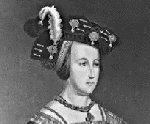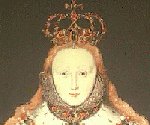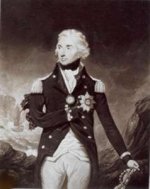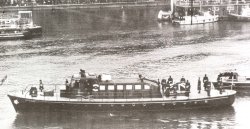

LAST JOURNEYS

Anne Boleyn, the second wife of Henry VIII, went to her Coronation in 1533 from Greenwich to the Tower Of London by barge. Three years later, Anne was to make the same journey by River to the Tower but, this time, for her execution.

When Queen Elizabeth I died at Richmond Palace in 1603, her body was taken by barge, at night, to Whitehall Palace.

After his death at the battle of Trafalgar in October 1805 on board 'HMS Victory', Lord Nelson’s body was carried from Greenwich on board Charles II's royal barge for his burial on 9 January 1806 in the crypt of St. Pauls Cathedral. The coffin was accompanied by some 60 boats including the barge of the Lord Mayor.


Following Sir Winston Churchill's funeral on 29 January 1965 at St. Paul's Cathedral, his body was taken upriver on the former PLA Launch Havengore from Tower Gate upstream to Waterloo Pier from where it was taken, by train, to his final resting place at Bladon in Oxfordshire.
THE LORD MAYOR'S SHOW
The Lord Mayor’s Show began as a River Pageant on the Thames in 1453 and continued for four centuries until 1857 when responsibility for the tidal Thames passed from the Corporation of the City of London to the Thames Conservancy. In 1953 it was revived for a year to mark both the 500th anniversary of the first event and the Coronation of Queen Elizabeth II. It was the idea of the Lord Mayor, Sir Rupert de la Bere, and was organised by the Port of London Authority. A procession of some 150 boats travelled the 3 miles from Greenwich to Westminster.
THE BOAT RACE

The first boat race between Oxford and Cambridge University Eights, was held in 1829 and took place between Hambleden Lock and Henley Bridge on the non-tidal Thames. Oxford won. The second encounter between them was in 1836 and took place on the tidal Thames between Westminster and Putney. This time Cambridge won. Thereafter it became an annual event but in 1845 the course changed: it went from Putney Bridge to Mortlake Church but in the following year, the end of the course changed from Mortlake Church to the Ship Inn. It is this course of nearly 4Ľ miles that has been used ever since.
SUNDAYS
The Puritan Parliament of 1650 prohibited the use of any boat, wherry, lighter or barge on the Thames on a Sunday, except to make a journey to church or, in the case of emergencies, with the special permission of a Justice of the Peace and troops were stationed along the River to make sure that the law was enforced. This Act of Parliament, like many others, automatically came to an end with the Restoration but it wae re-enacted again and remained in force until it was repealed by the Watermen's Act of 1827. However, this Act left the situation far from clear as it expressly permitted travel by boat on a Sunday but it did not make it clear whether locks could be worked. The Thames Commissioners came down on the side of the Sabbatarians and in 1842 made a byelaw prohibiting the use of locks between 0600 and midnight on Sundays. In 1849 this was challenged by Charles Clark, the master of a barge 'Susanna', on the basis that the Thames was a public highway and consequently there was a right to use the River at any time. The City of London, who were still responsible for the management of the Thames below Staines at that time, supported him and the Commissioners lost their case. After this case the legal right to use all the Thames on a Sunday was established.
BISHOP OF SALISBURY
In the 11th century, the Thames-side village of Sonning was the centre of the Diocese of Wiltshire and Berkshire and until the Reformation was the home of the Bishop of Salisbury.
GLORIOUS REVOLUTION
 |
William of Orange |
The 'Glorious Revolution' of 1688, during which James II was forced to flee England and leave the Throne free for William of Orange (King William III), was plotted by John Lovelace in a crypt in the remains of the St. Mary's Priory in the Thames-side village of Hurley.
LITTLE GENTELMEN IN BLACK VELVET

It was in Hampton Court Park, on the north side of the River by Raven's Eyott, that King William III's horse stumbled over a mole hill and threw the unfortunate and unpopular Monarch to his death in 1702. Thereafter, the Jacobites - supporters of James II, who was deposed by William III - would toast the health of 'the little gentleman in black velvet'.
CORONATION STONE
The Royal Borough of Kingston - upon -Thames is one of the oldest Boroughs in England - it was granted its Charter by King John in 1200 but it is much older than that. It is the home of the Anglo-Saxon Coronation Stone on which, it is said, were crowned no less than 7 Kings, including King Edward the Elder (son of King Alfred) and King Ethelred the Unready.
BANK OF ENGLAND
The only break-in known at the Bank of England was perpetrated from the Thames. In 1836 the bank's directors received an extraordinary letter from a sewerman saying that, at a certain time on a particular date, he would meet them in the bullion room. At the appointed time the directors were amazed to find him breaking-in through an old drain in the floor which connected directly to the River. The passage was subsequently secured but the sewerman's honesty was rewarded by a substantial sum of money.
THAMES AND SEVERN CANAL

The Thames and Severn Canal, which once linked the River Thames to The River Severn, joined the Thames about half a mile above Lechlade. Its entry is marked by the Inglesham Roundhouse. It was opened in 1789 and was quite a feat of engineering. It was 45 km (28 miles) long and required the building of 45 locks and the construction of the 3490 m (3816 yds) long Sapperton Tunnel. In anticipation of the increased barge traffic on the Thames, a new channel was cut at Radcot and a new bridge built, as the arches of the original Radcot bridge were too low to take large barges, particularly if the water was high. The last recorded traffic on the canal was in 1911 but it was not formally closed until 1933. It is now in the course of restoration which it is hoped will be completed by the end of the decade. On its completion it effectively made southern England an island as it pre-dated the Kennet and Avon canal by some 20 years.
CHEESE
During the 18th century, between 2000 and 3000 tons of cheese per year was taken by barge from Buscot down-river to London. At that time it would probably have been about a 5 day journey and, depending on the cargo, would have required anything between 1 and 14 horses. The same journey upstream would have probably taken about 8 days.
BISHAM ABBEY

Bisham Abbey, just upstream from Marlow, is now a National Sports Centre. It was built in the 12th century as a preceptory (a subordinate community of the Knights Templar) but became an Augustine Priory and then a Benedictine Abbey and is one of the important religious buildings along the Thames. After the Dissolution of the Monasteries it became the country house of Anne of Cleves on her divorce from Henry VIII. Elizabeth I was also a regular visitor to the house particularly as a child.
GODSTOW NUNNERY

Between Godstow Lock and King's Weir can be found the remains of the Benedictine Nunnery dedicated to St. Mary and St. John the Baptist. It was built in 1138 and at the Dissolution of the Monasteries in 1538 it passed to Dr. George Owen, a Fellow of Merton and Royal Physician to Henry VIII. It was finally burnt down by Thomas Fairfax (Captain-General of Cromwell’s New Model Army) during the Civil War in 1646.
It was here that Rosamund Clifford ("Fair Rosamund"), the mistress of Henry II for some 6 years and who bore him two sons, was brought up and to where she returned to take up Holy Orders shortly before her death in 1176.
CLIVEDEN HOUSE

Cliveden House is perhaps the most famous of houses in the Thames Valley and is situated downstream of Cookham Lock. It was designed by Charles Barry and completed in 1862. It passed into the hands of the Astor Family in 1893 and during the first half of this century was the home of Lord Waldorf and Lady Nancy Astor (the first woman MP and Society hostess). Cliveden House has become synonymous with political and social intrigue culminating in the 'Profumo Affair' in the early 1960's. The house is now an upmarket hotel and is owned by the National Trust.
MEDMENHAM ABBEY

Medmenham Abbey, situated between Hambleden and Hurley Locks, was founded by the Cistercian Order in 1200. At the time of the Dissolution of the Monasteries, Medmenham passed into the hands of the Duffield Family. In the late 18th century, Francis Duffield granted a lease of Medmenham to Sir Francis Dashwood where he and his wealthy and reprehensible cronies held the infamous 'Hell Fire Club' and lived up to its motto 'Fay ce que voudres' (Do whatever you want).
WORLD POOHSTICKS CHAMPIONSHIPS
The World Poohsticks Championships are held each year on the River Thames at Little Wittenham and Dorchester Footbridges at Day's Lock. The game is described in A A Milne's book "The House at Pooh Corner", written in 1928, where Pooh Bear and his friends stood on a bridge in the Ashdown Forest and raced twigs on the stream below.
The event was started on the Thames in 1983 by Lynn David, the former lock-keeper at Day's Lock, as a fund raising event for the Royal National Lifeboat Institution (RNLI). He put out a box of sticks and a collection box and it soon became an annual event. It originally took place in January but in the icy weather of 1997 it was moved to March. It is now organised by the Rotary Club of Sinodun and supported by the WRVS and Oxford Ditch Cruising Club.
To find the date of the next Championship Click Here to go to the River Thames Events page.
To return to The River Thames page Click Here
Copyright © The Harts